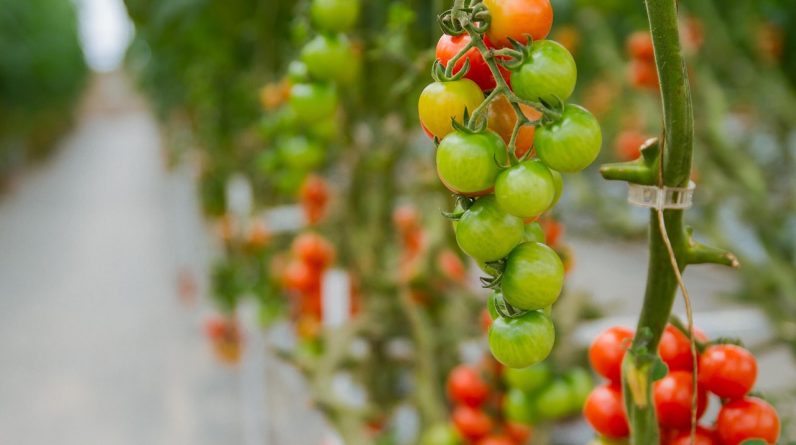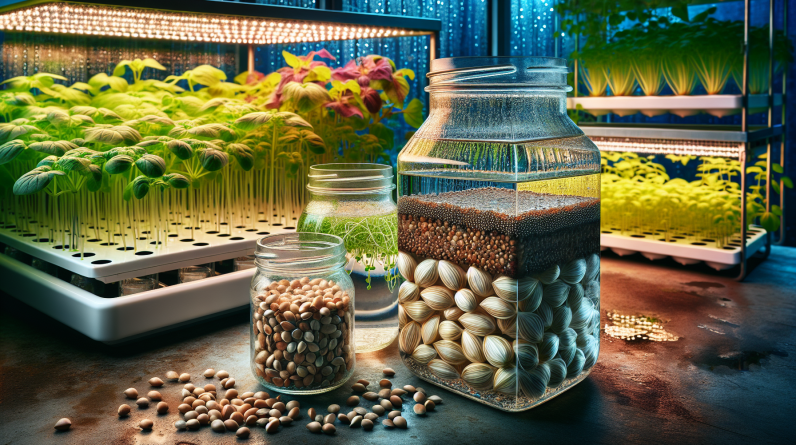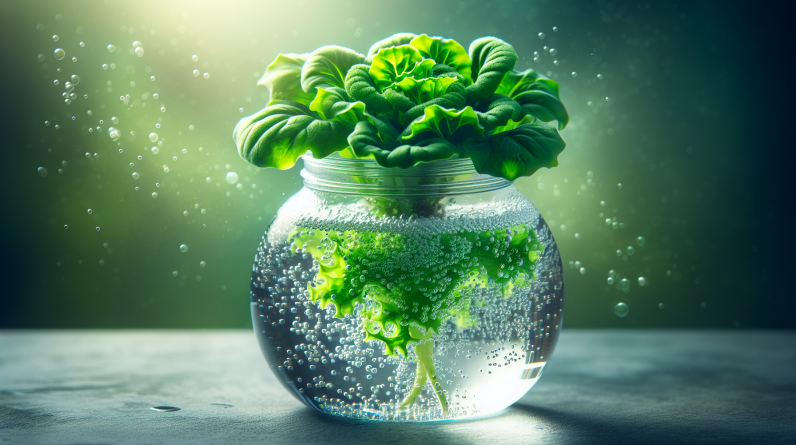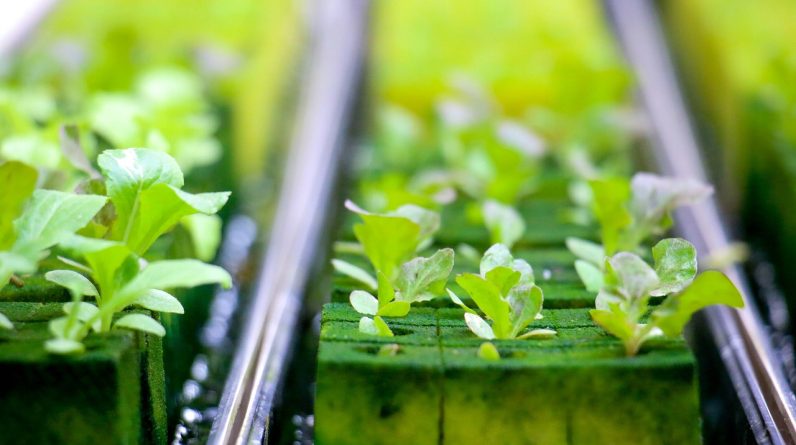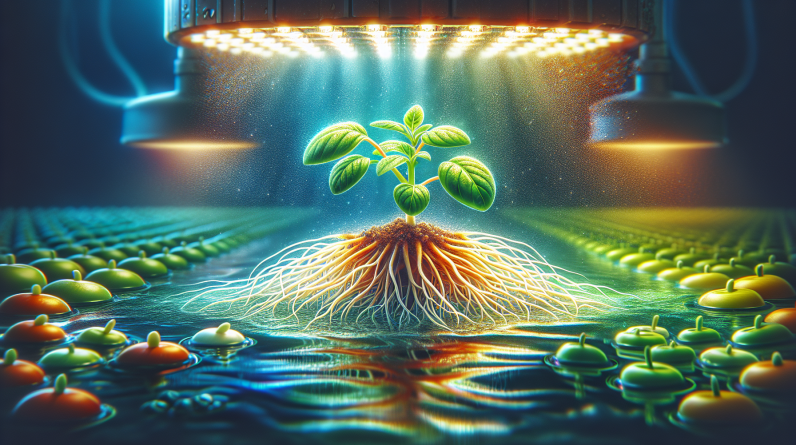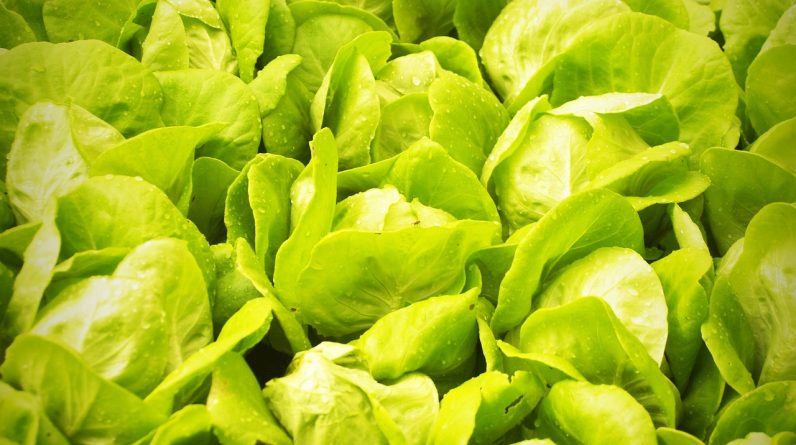
Have you ever wondered how you can speed up the growth of your hydroponics? If so, you’re in luck! In this article, we will explore some simple yet effective techniques that you can implement to accelerate the growth of your hydroponic plants. Whether you are a seasoned hydroponics enthusiast or just starting out, these tips will help you achieve faster and healthier growth for your crops. So let’s dive in and discover how you can make your hydroponics grow faster!
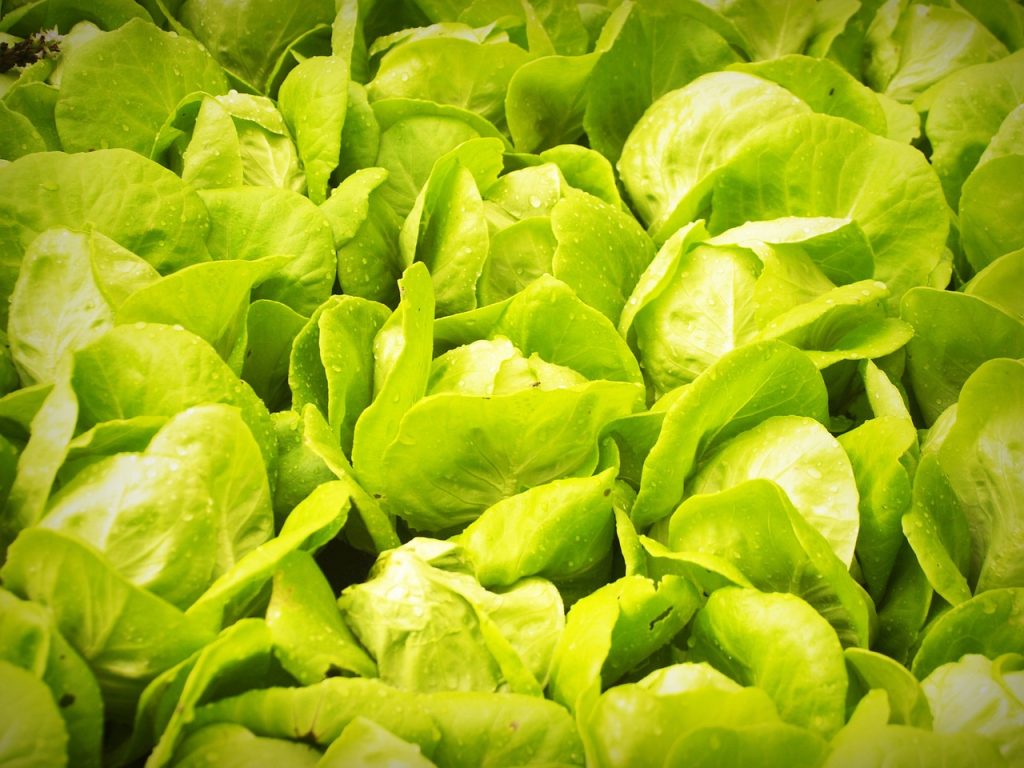
This image is property of pixabay.com.
Optimizing Light
Choosing the Right Lighting Equipment
When it comes to hydroponic gardening, choosing the right lighting equipment is crucial for promoting faster growth. LED grow lights are the most popular choice among hydroponic enthusiasts due to their energy efficiency and ability to provide the necessary light spectrum for plant growth. Make sure to select lights that offer a full spectrum of light, including red and blue wavelengths, which are essential for photosynthesis. Additionally, consider the wattage and coverage area of the lights to ensure they can adequately illuminate your plants.
Providing the Correct Light Spectrum
In order to maximize the growth rate of your hydroponic plants, it’s important to provide them with the correct light spectrum. During the vegetative stage, plants require more blue light to promote leafy growth. On the other hand, during the flowering stage, plants need more red light to encourage the development of flowers and fruits. By providing the appropriate light spectrum at each stage, you can optimize your plant’s growth and achieve faster results.
Maintaining Optimal Light Intensity
In addition to choosing the right lighting equipment and spectrum, maintaining optimal light intensity is essential for fast hydroponic growth. Different plant varieties have varying light intensity requirements, so it’s important to research and understand the specific needs of your plants. Aim for a light intensity of around 20,000 to 50,000 lumens per square foot for most plants. Regularly monitor light levels and adjust the distance between the lights and the plants accordingly to ensure the optimal intensity is maintained.
Adjusting Light Duration
The duration of light exposure also plays a significant role in hydroponic plant growth. During the vegetative stage, plants typically require around 16-18 hours of light per day. As they transition to the flowering stage, you can reduce the light exposure to 12 hours per day. It’s important to adhere to these recommended light duration guidelines to ensure your plants receive the necessary light for optimal growth and development.
Avoiding Light Stress
While light is essential for plant growth, it’s important to avoid subjecting your hydroponic plants to excessive light stress. Too much light can lead to photoinhibition, where the plants are unable to effectively utilize the light energy and may experience damage. To prevent light stress, make sure your lighting system is properly set up to provide the recommended intensity and duration for your specific plants. Regularly monitor your plants for any signs of stress, such as wilting or yellowing leaves, and adjust the lighting conditions accordingly.
Controlling Nutrient Solution
Balancing pH Levels
Maintaining the correct pH levels in your hydroponic nutrient solution is vital for ensuring optimal plant growth. Most plants prefer a slightly acidic pH range of 5.5 to 6.5. However, different plants may have specific pH preferences, so it’s important to research and adjust accordingly. Regularly test the pH of your nutrient solution using a pH meter or test strips, and make the necessary adjustments using pH up or down solutions to keep it within the desired range.
Maintaining Proper EC Levels
EC, or electrical conductivity, is another important aspect of nutrient solution control in hydroponics. It measures the concentration of nutrients in the solution and indicates its overall strength. Different plant varieties have varying EC requirements, so it’s important to understand the specific needs of your plants. Aim for an EC level of around 1.2 to 2.2 for most plants during the vegetative stage, and slightly lower during the flowering stage. Regularly monitor and adjust the EC levels by diluting or adding nutrients to maintain optimal nutrient concentrations.
Adjusting Nutrient Concentrations
As your hydroponic plants grow and develop, their nutrient requirements may change. It’s important to regularly monitor and adjust the nutrient concentrations in your solution to meet the plants’ needs at different growth stages. Increase the nutrient concentration during the vegetative stage to promote healthy leafy growth, and adjust it lower during the flowering stage to promote flower and fruit development. Follow the recommended nutrient feeding schedules for your specific plants and make adjustments as necessary.
Ensuring Sufficient Oxygenation
Proper oxygenation of the nutrient solution is crucial for healthy hydroponic plant growth. Oxygen is essential for root respiration and nutrient uptake. To ensure sufficient oxygenation, consider using air stones or diffusers in your nutrient reservoir to provide a steady stream of oxygen bubbles. Additionally, avoid overfilling the reservoir, as excessive water levels can limit oxygen availability to the roots. Regularly check the oxygen levels in your solution to ensure it remains adequately oxygenated for optimal growth.
Managing Air Circulation
Using Ventilation Systems
Maintaining proper air circulation is essential for creating a healthy growing environment in your hydroponic system. Utilize ventilation systems, such as fans or exhaust systems, to ensure a continuous flow of fresh air. This helps to prevent the buildup of stagnant air, which can lead to issues like mold or disease. Position the fans strategically to ensure even air distribution throughout the grow area.
Controlling Temperature and Humidity
Temperature and humidity levels play a crucial role in hydroponic plant growth. Different plant varieties have varying temperature and humidity preferences, so it’s important to research and adjust accordingly. In general, aim for a temperature range of 65-80°F (18-26°C) and a humidity range of 50-70%. Use thermometers and hygrometers to regularly monitor and maintain optimal conditions. Consider using heaters, air conditioners, or dehumidifiers as necessary to control the temperature and humidity levels.
Preventing Stagnant Air
Stagnant air can have adverse effects on hydroponic plant growth. It can lead to poor air circulation, increased humidity levels, and the buildup of harmful gases. To prevent stagnant air, position oscillating fans strategically to create a gentle breeze and promote air movement. This helps to strengthen the plants’ stems, prevent the spreading of diseases, and improve the overall health and growth rate of your hydroponic plants.
Circulating CO2
Carbon dioxide (CO2) is an essential component of photosynthesis and can significantly boost plant growth in hydroponic systems. Consider implementing CO2 supplementation techniques, such as using CO2 generators or tanks, to increase the CO2 levels in your grow area. Keep in mind that high CO2 levels should only be maintained during the light period of the plants’ growth cycle. Regularly monitor the CO2 levels to ensure they remain within the optimal range, typically around 1000-1500 parts per million (ppm).
Avoiding Excessive Air Movement
While air circulation is important, it’s also crucial to avoid excessive air movement in your hydroponic system. Strong and constant air currents can lead to water loss through evaporation and increase the risk of dehydration for your plants. Make sure the air movement is gentle and evenly distributed throughout the grow area. Position fans in a way that promotes adequate airflow without causing excessive turbulence or wind stress on the plants.
Promoting Root Health
Using the Right Hydroponic System
Choosing the right hydroponic system is essential for promoting healthy root development and faster plant growth. There are various types of hydroponic systems available, such as deep water culture, nutrient film technique, or aeroponics. Each system has its own advantages and considerations, so it’s important to research and select the one that best suits your plant’s needs and your growing environment. Ensure that the system provides sufficient support and aeration for the roots to thrive.
Ensuring Proper Aeration
Proper aeration is crucial for healthy roots in a hydroponic system. The roots need oxygen to respire and absorb nutrients efficiently. Some hydroponic systems, such as deep water culture or aeroponics, naturally provide ample aeration to the roots. However, in other systems, it may be necessary to incorporate additional aeration techniques. This can be achieved by using air stones or diffusers in the nutrient solution or ensuring proper water movement and oxygenation within the system.
Monitoring and Preventing Root Diseases
Root diseases can significantly hamper the growth and health of hydroponic plants. Regularly monitor your plants’ roots for any signs of rot, discoloration, or pests. To prevent root diseases, maintain proper sanitation practices by regularly cleaning and disinfecting your hydroponic system and equipment. Avoid overwatering which can lead to root suffocation and limit the risk of contamination by using sterilized growing medium and properly filtered water.
Promoting Beneficial Microbes
Beneficial microbes play a vital role in hydroponic plant growth by enhancing nutrient uptake and protecting against harmful pathogens. Introduce beneficial microbes into your system by using microbial inoculants or microbial-rich additives. These microbes establish a symbiotic relationship with the roots, promoting nutrient availability and overall plant health. Regularly monitor the microbial activity in your hydroponic system and adjust the microbial supplementation as needed.
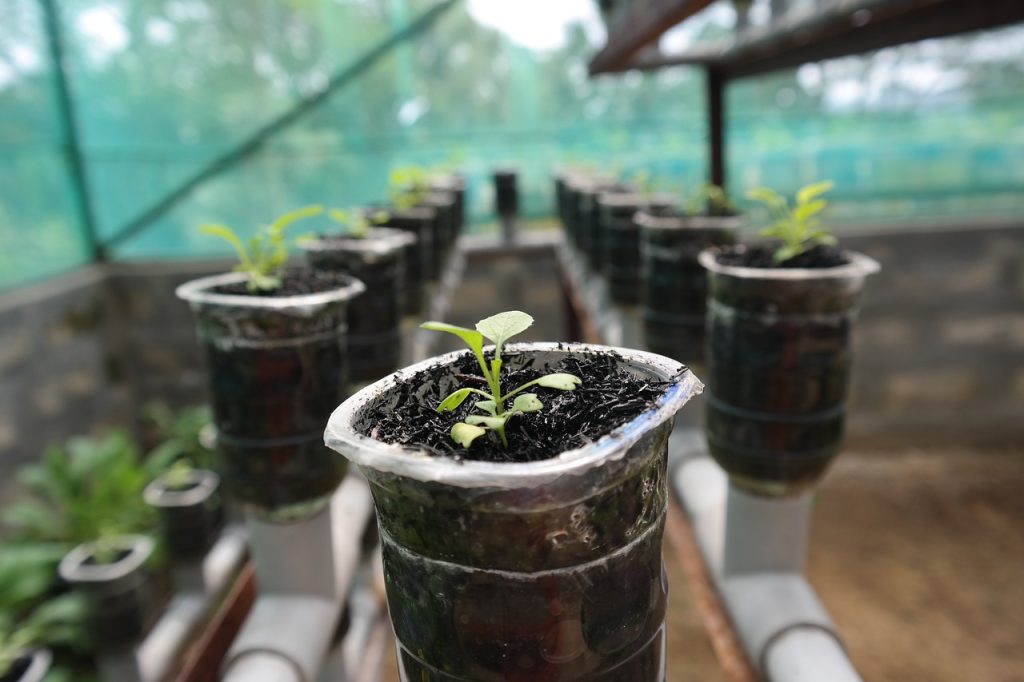
This image is property of pixabay.com.
Optimizing Nutrient Timing
Providing Proper Nutrient Feeding Schedule
Establishing a proper nutrient feeding schedule is essential for promoting faster hydroponic plant growth. Different growth stages require different nutrient compositions and concentrations. Follow the instructions provided by the nutrient manufacturer and adjust the feeding schedule accordingly. During the vegetative stage, provide a nutrient solution that is high in nitrogen to promote leafy growth. As the plants transition to the flowering stage, switch to a nutrient solution that is higher in phosphorus and potassium to support flower and fruit development.
Implementing Pre-Flowering and Flowering Boosters
To further optimize the growth rate of your hydroponic plants, consider implementing pre-flowering and flowering boosters. These are nutrient supplements specifically formulated to enhance flower initiation and development. Pre-flowering boosters are typically applied during the transition from the vegetative to the flowering stage, while flowering boosters are used throughout the flowering period. Follow the recommended dosage and application instructions provided by the manufacturer to maximize their effectiveness.
Adjusting Nutrient Availability during Different Growth Stages
As your hydroponic plants progress through different growth stages, their nutrient requirements change. During the early vegetative stage, plants primarily require nitrogen for foliage growth. As they develop further, the demand for other macro and micronutrients increases. Regularly monitor and adjust the nutrient availability in your solution by adjusting the nutrient concentrations or adding specific nutrient supplements. This ensures that your plants receive the necessary nutrients at each growth stage and promotes faster, healthier growth overall.
Choosing the Right Plant Varieties
Selecting Fast-Growing Plant Species
If you want to optimize the growth speed of your hydroponic garden, it’s important to select fast-growing plant species. Some plant varieties naturally have shorter growth cycles and are more suitable for hydroponic systems. Lettuce, herbs like basil or cilantro, and certain leafy greens are known for their relatively fast growth rates. Research and choose plant varieties that are well-suited for hydroponics and have shorter growth cycles to achieve quicker harvests and maximize your yield.
Choosing Hydroponic-Friendly Varieties
Certain plant varieties are better suited for hydroponic cultivation due to their adaptability to soilless systems. Look for varieties that have a reputation for thriving in hydroponic environments. These plants should have characteristics like compact root systems, tolerance to nutrient solution variations, and the ability to absorb nutrients efficiently. By selecting hydroponic-friendly varieties, you can ensure better overall plant health and growth, ultimately leading to faster growth rates.
Considering Climate and Seasonal Adaptability
When choosing plant varieties for your hydroponic garden, it’s important to consider their adaptability to your climate and the season. Some plants thrive in warm environments, while others prefer cooler temperatures. Research the specific climatic requirements of the varieties you are interested in and choose ones that are well-suited to your location and the time of year you will be growing them. This ensures that the plants will be more comfortable and able to grow at a faster rate in your specific environmental conditions.
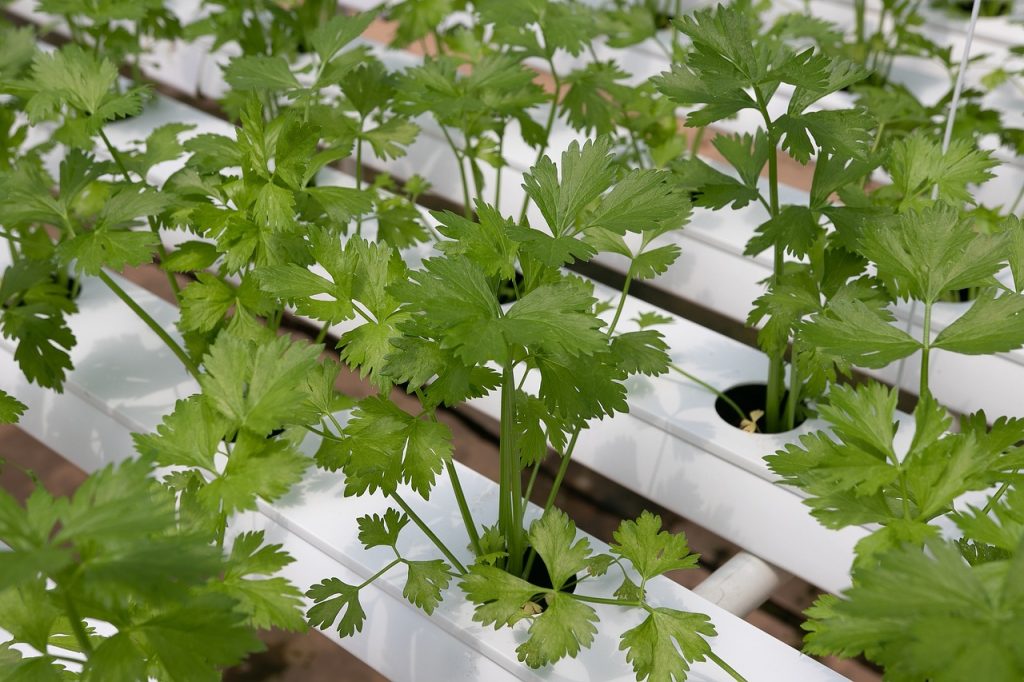
This image is property of pixabay.com.
Maintaining Pristine Growing Environment
Sanitizing Growing Medium and Equipment
Maintaining a clean and sanitized growing environment is crucial for promoting faster and healthier hydroponic plant growth. Regularly clean and sanitize your growing medium, such as rockwool cubes or perlite, to prevent the buildup of harmful pathogens that can hinder plant growth. Additionally, disinfect your hydroponic equipment, such as pumps, reservoirs, and tubing, to avoid the spread of diseases or contaminants. Implement a regular cleaning schedule and use appropriate disinfectants to ensure a pristine growing environment for your plants.
Preventing Pest Infestations
Pests can quickly damage or destroy your hydroponic plants, leading to stunted growth and reduced yields. To prevent pest infestations, establish a proactive pest management strategy. Regularly inspect your plants for any signs of pests, such as chewed leaves or webs, and take immediate action if any are detected. Implement preventive measures such as using sticky traps, introducing beneficial insects, or applying organic pest control solutions. Minimizing the risk of pest infestations ensures that your plants can grow faster and healthier without external threats.
Practicing Proper Crop Rotation
Crop rotation is an effective technique for preventing the buildup of pests and diseases in your hydroponic garden. Avoid planting the same crop or plant family in the same location consecutively. Instead, rotate your crops to different areas within your grow space or system. This helps to disrupt the life cycle of pests and pathogens, reducing the risk of infestation or disease transmission. By practicing proper crop rotation, you create a healthier growing environment, allowing your plants to grow faster and more vigorously.
Maintaining Cleanliness in the Grow Area
In addition to cleaning and sanitizing the growing medium and equipment, it’s important to maintain overall cleanliness in your hydroponic grow area. Remove any dead plant matter or debris that may accumulate, as they can harbor pests or diseases. Regularly sweep or vacuum the area to prevent dust or dirt from accumulating. Keeping a clean and tidy grow area minimizes potential sources of contamination and promotes a healthier environment for your plants to grow faster.
Maximizing Water Efficiency
Recirculating Water
Water efficiency is essential in hydroponic systems, as it helps to conserve water resources and minimize waste. Consider implementing a water recirculation system in your hydroponic setup. This involves collecting and filtering the runoff from your plants’ irrigation and nutrient solution, then reusing it for future cycles. Recirculating water not only reduces water consumption but also ensures a more consistent nutrient supply for your plants, ultimately promoting faster growth rates.
Using Water-Saving Techniques
In addition to water recirculation, there are other water-saving techniques you can implement in your hydroponic garden. These include using water-efficient irrigation methods, such as drip irrigation or automated systems with timers. These techniques deliver water directly to the plants’ root zones, minimizing runoff and evaporation. Additionally, consider using water-saving technologies, such as moisture sensors or smart controllers, to optimize water usage based on the actual needs of your plants.
Preventing Water Contamination
Maintaining water quality is crucial for the health and growth of your hydroponic plants. Prevent water contamination by using high-quality water sources, such as filtered or purified water, to mix your nutrient solution. Avoid using tap water, as it may contain impurities or chemicals that can hinder plant growth. Regularly monitor the pH, EC, and nutrient levels of your water and nutrient solution to ensure they remain within the desired range. Periodically flush and clean your system to prevent nutrient buildup or the growth of harmful algae.
Optimizing Irrigation Practices
Proper irrigation practices are essential for maximizing water efficiency and promoting faster hydroponic plant growth. Avoid overwatering your plants, as excessive moisture can lead to root suffocation and the development of root diseases. On the other hand, underwatering can cause dehydration and inhibit nutrient uptake. Monitor the moisture levels of your growing medium regularly and adjust your irrigation schedule accordingly. Aim for a balance that keeps the roots hydrated without leaving them waterlogged.
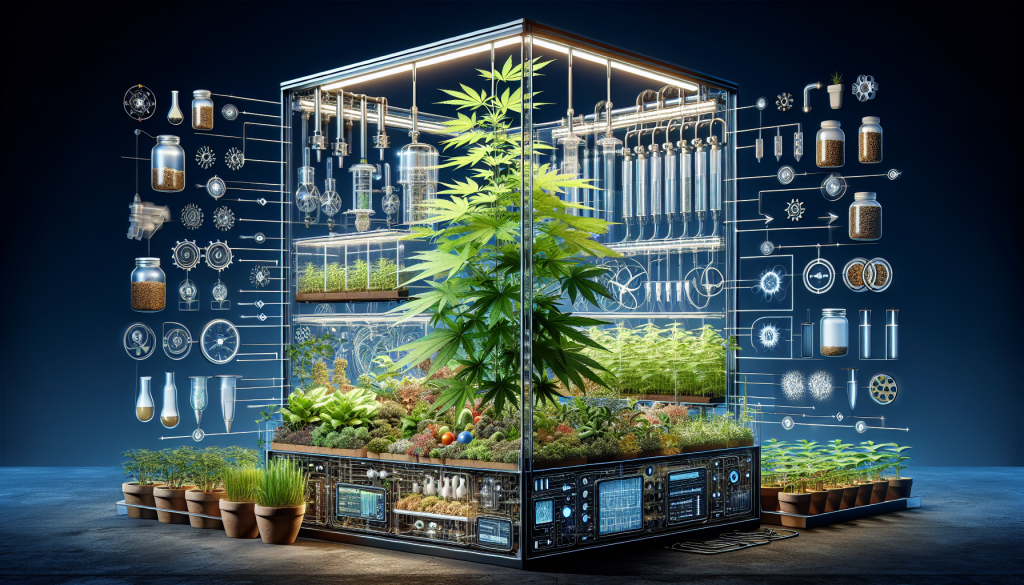
Monitoring and Adjusting Environmental Factors
Regularly Measuring pH and EC Levels
To ensure the optimal growth and development of your hydroponic plants, regularly monitor and measure the pH and EC levels of your nutrient solution. Use a pH meter and EC meter to accurately measure these parameters. pH levels outside of the desired range can prevent nutrient uptake, while incorrect EC levels can lead to nutrient deficiencies or toxicities. Make the necessary adjustments using pH up or down solutions and nutrient supplements to maintain optimal pH and EC levels for your plants.
Tracking Temperature and Humidity
Temperature and humidity levels have a significant impact on hydroponic plant growth. Use thermometers and hygrometers to regularly monitor and track these factors in your growing area. Adjust the temperature and humidity as needed to keep them within the optimal range for your specific plant varieties. Stable and controlled environmental conditions ensure that your plants can grow faster and more vigorously without facing unnecessary stressors.
Observing Light Levels
Light levels directly affect the photosynthetic activity and growth rate of your hydroponic plants. Regularly observe and monitor the light levels in your grow area using a light meter. Pay attention to any fluctuations or changes in the light intensity and duration to ensure your plants receive the necessary light for optimal growth. Adjust the distance between the lights and the plants or consider supplemental lighting solutions if needed to maintain the desired light levels.
Monitoring CO2 Levels
Carbon dioxide (CO2) plays a crucial role in photosynthesis and can significantly enhance plant growth in hydroponic systems. Use a CO2 monitor to regularly measure and monitor the CO2 levels in your grow area. Maintain the CO2 levels within the recommended range, typically around 1000-1500 ppm, during the light period of your plants’ growth cycle. Proper CO2 supplementation ensures that your plants have access to ample carbon dioxide, leading to faster growth and increased productivity.
Implementing Growth-Boosting Techniques
Using Hormonal Supplements
Hormonal supplements can effectively boost the growth rate of your hydroponic plants. Plant hormones, such as auxins or cytokinins, enhance root growth, branching, and overall plant development. Consider using hormonal supplements specifically formulated for hydroponic systems. Follow the dosage and application instructions provided by the manufacturer to ensure the optimal growth-boosting effects of these supplements. Regularly monitor your plants’ growth and adjust the hormonal supplementation as necessary.
Applying Pruning and Training Methods
Pruning and training techniques can promote faster growth and better overall plant structure in hydroponic systems. Regular pruning helps to remove dead or diseased plant parts and redirects energy towards new growth. Training methods, such as topping or low-stress training, can encourage lateral branching and increase the number of growing sites. Implement these techniques based on the specific requirements and growth habits of your plants to maximize their growth potential and achieve faster results.
Implementing Plant Stress Techniques
Strategic implementation of plant stress techniques can effectively stimulate faster growth in hydroponic plants. Stressors such as controlled periods of water or nutrient deprivation, mild temperature fluctuations, or limited light exposure can trigger the plants’ survival responses and lead to increased growth rate and productivity. However, it’s important to carefully manage and monitor these stressors to prevent excessive stress or damage to your plants. Research and implement stress techniques that are suitable for your specific plant varieties and experience level.
Utilizing Organic Additives
Organic additives can provide additional growth-boosting benefits to your hydroponic plants. These can include organic fertilizers, compost teas, or beneficial plant extracts. Organic additives enrich the nutrient solution with essential micronutrients and promote beneficial microbial activity in the root zone. Additionally, they can improve the soil structure (if using soilless growing media) and enhance nutrient absorption. Incorporate organic additives into your nutrient solution according to the recommended dosage and feeding schedule to optimize the growth and health of your hydroponic plants.
In conclusion, by optimizing various aspects of your hydroponic setup, you can promote faster growth and maximize the productivity of your plants. Choosing the right lighting equipment, providing the correct light spectrum, and maintaining optimal light intensity are crucial for photosynthesis and overall plant development. Controlling nutrient solution by balancing pH levels, maintaining proper EC levels, adjusting nutrient concentrations, and ensuring sufficient oxygenation contributes to healthy root growth and nutrient uptake. Managing air circulation, promoting root health by using the right hydroponic system, maintaining a pristine growing environment, maximizing water efficiency, and monitoring and adjusting environmental factors all play important roles in maximizing the growth rate of your hydroponic plants. Finally, implementing growth-boosting techniques, selecting the right plant varieties, and practicing effective nutrient timing can further enhance the speed and health of your hydroponic garden. With proper care and attention to these factors, you’ll be well on your way to enjoying faster and more abundant yields in your hydroponic setup.



